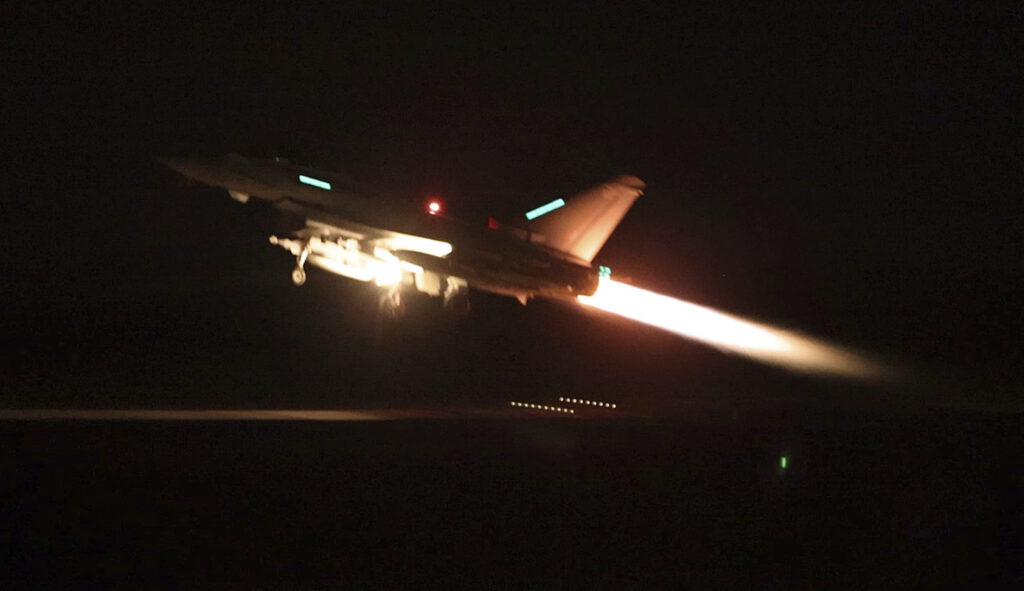The U.S. and U.K. militaries carried out dozens of airstrikes in Yemen on Thursday night, targeting the Houthis’ military capabilities following more than 25 attacks on commercial vessels in nearby waterways.
U.S. Air Forces Central, CENTCOM’s Joint and Combined Air Component Command, used more than 100 precision-guided munitions of various types, striking more than 60 targets at 16 militant locations, according to Air Force Lt. Gen. Alexus Grynkewich, U.S. Air Forces Central and Combined Forces Air Component commander.
They targeted command-and-control nodes, munitions depots, launching systems, production facilities, and air defense radar systems in an effort to “degrade and disrupt the Houthis’ ability to conduct these types of attacks,” Pentagon spokesman Maj. Gen. Patrick Ryder said on CBS Friday morning.
“We’re still conducting the battle damage assessment,” he added. “Initial indications are that we had good effects.”

A senior U.S. military official characterized the effects the strikes had as “significant.”
The United States Navy’s guided-missile submarine USS Florida and U.S. Navy guided-missile destroyers were used in the strikes, as were the Navy’s Tomahawk Land Attack Missiles, while the United Kingdom used four Typhoon fighter aircraft. The U.K. defense ministry said the fighter jets dropped Paveway IV munitions, bombs with 500-pound warheads.
A Houthi official said five people were killed and that others were injured. Hussein al Ezzi, the official, also warned that the U.S. and the U.K. will “pay a heavy price and bear all the dire consequences of this blatant aggression.”
As of Friday morning, the U.S. had not seen any retaliatory action from the Houthis, Ryder added.
Governments from across the globe had issued repeated warnings to the Houthis to stop the attacks, but they continued to launch cruise and ballistic missiles and one-way attack drones at commercial shipping vessels in the Gulf of Aden, the Bab al Mandab Strait, and the Red Sea.
On Tuesday, the Houthis carried out their largest attack since they began in mid-November, which amounted to the final straw for President Joe Biden. Following the attack, President Joe Biden was “presented with response options,” according to national security council coordinator John Kirby.
Thursday’s strikes are the first time the U.S. has attempted to degrade the Houthis’ ability to carry out these attacks, though it had stood up an international task force that escorts commercial vessels through the waterways the Houthis’ attacks came in.
CLICK HERE TO READ MORE FROM THE WASHINGTON EXAMINER
U.S. National Security Council spokeswoman Adrienne Watson said last month that Iran “was deeply involved in planning” these Houthi attacks and that Iran’s “tactical intelligence,” which it provided to them, “remains critical.”
A spokesman for Iran’s Ministry of Foreign Affairs said in a statement the “arbitrary attacks will have no result other than fueling insecurity and instability in the region.”

